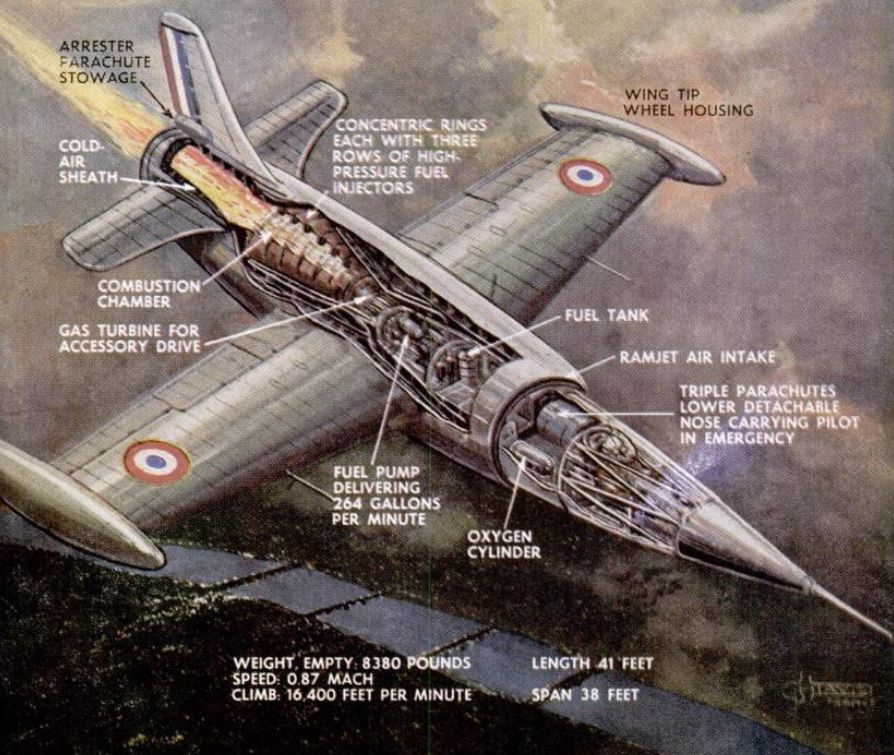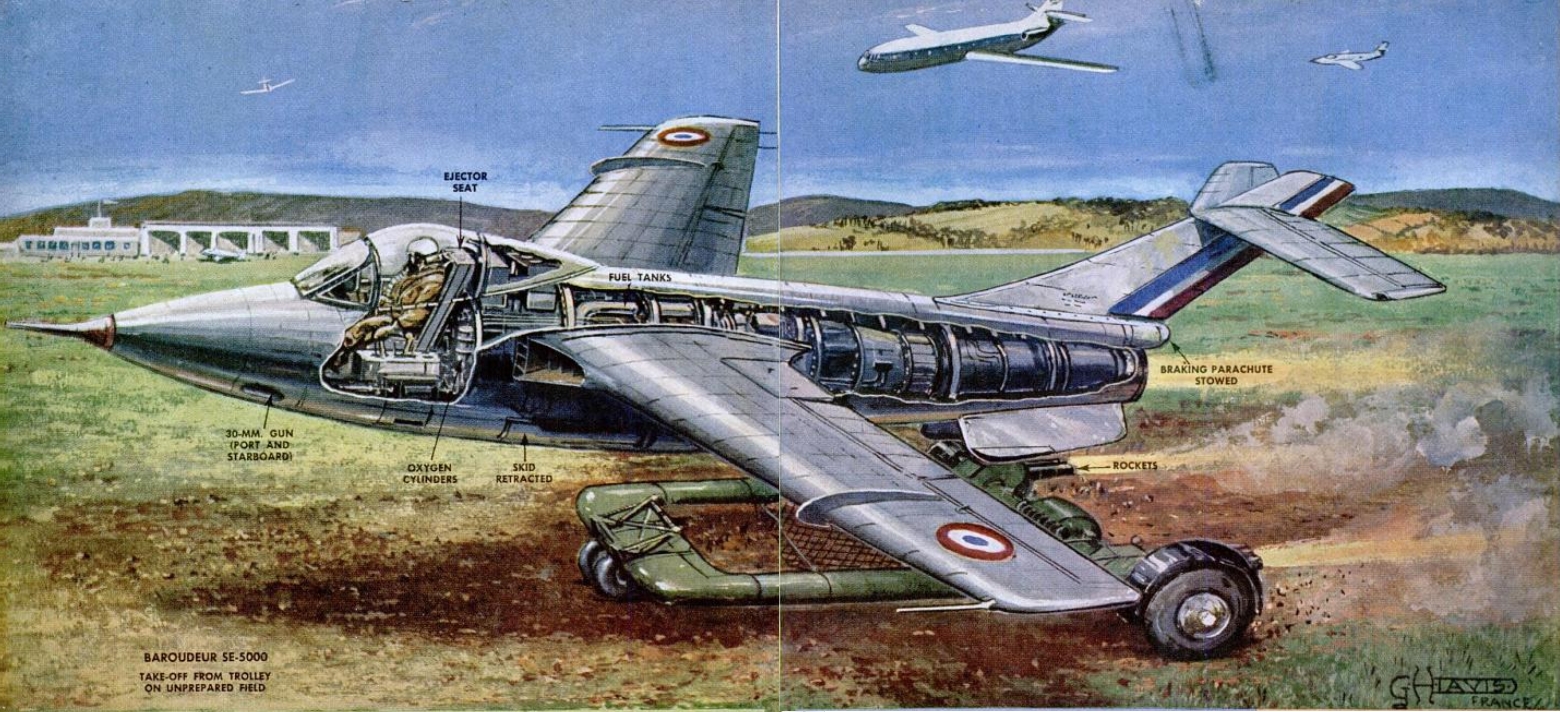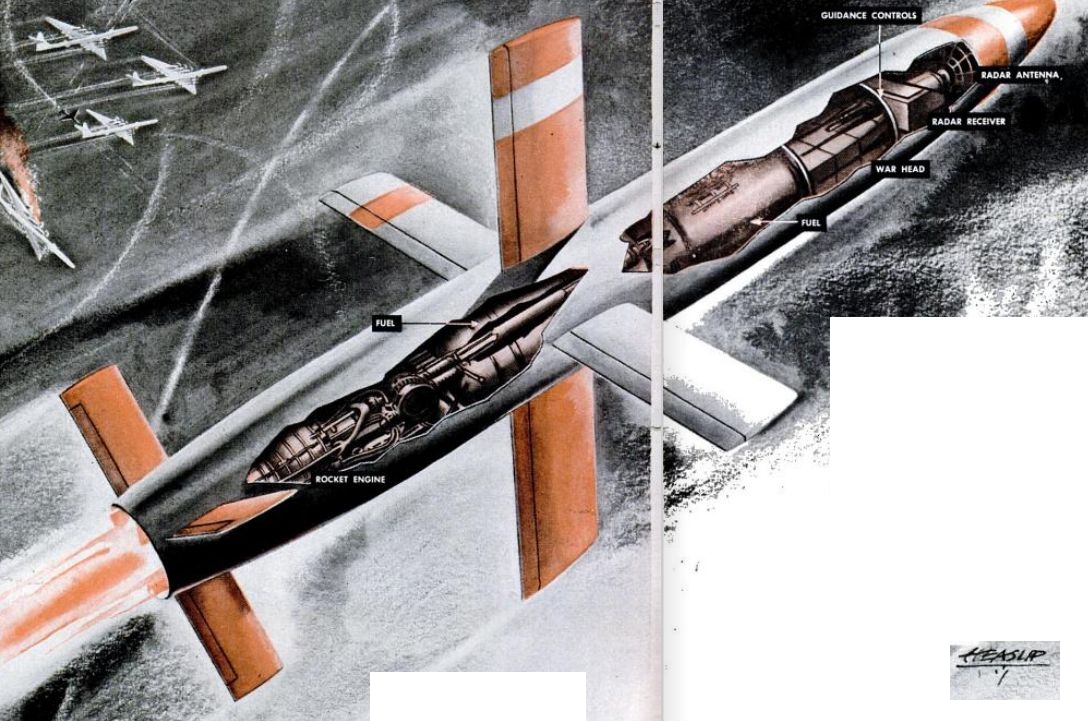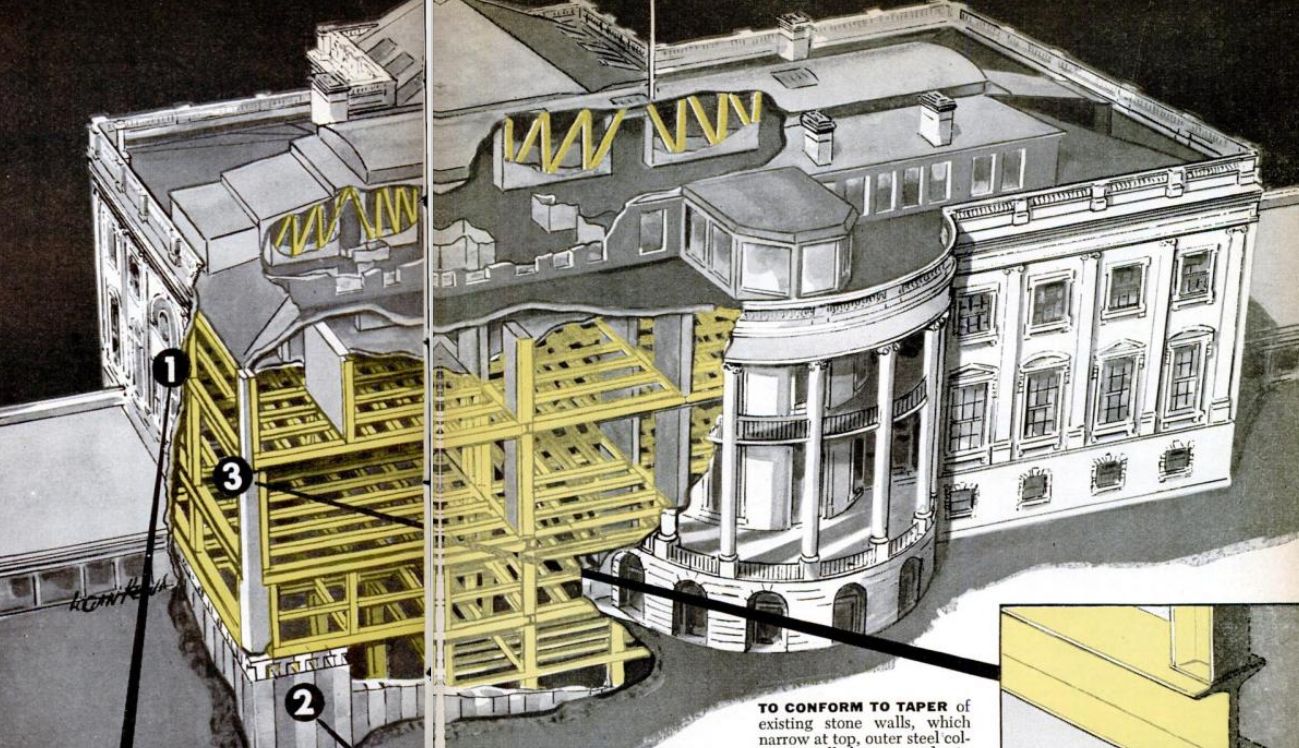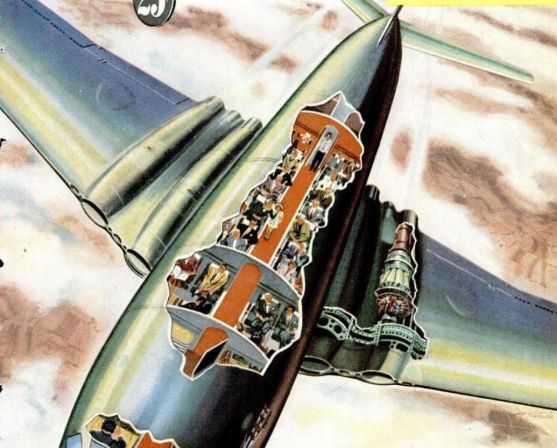Where’s the pilot? Well, maybe it’s not a plane. Maybe it’s a missile of some sort. But then, where’s the warhead?
You’re looking at a G.H. Davis cutaway drawing, 1956, of a Leduc 021 ramjet aircraft. No pilot, no warhead.
The Leduc 021 was carried up by a Languedoc airliner, Space Shuttle-style, and then released. The Leduc’s maximum ceiling was 65,000.
The reason for this unusual launch was because the Leduc used a ramjet instead of a rotary compresser (like you see on passenger jets) to force (i.e., ram) the much-needed air into the engine. The jet had to build up a certain minimum airspeed in order for the jet to fire.
Click to Enlarge to 894 x 755 px:
